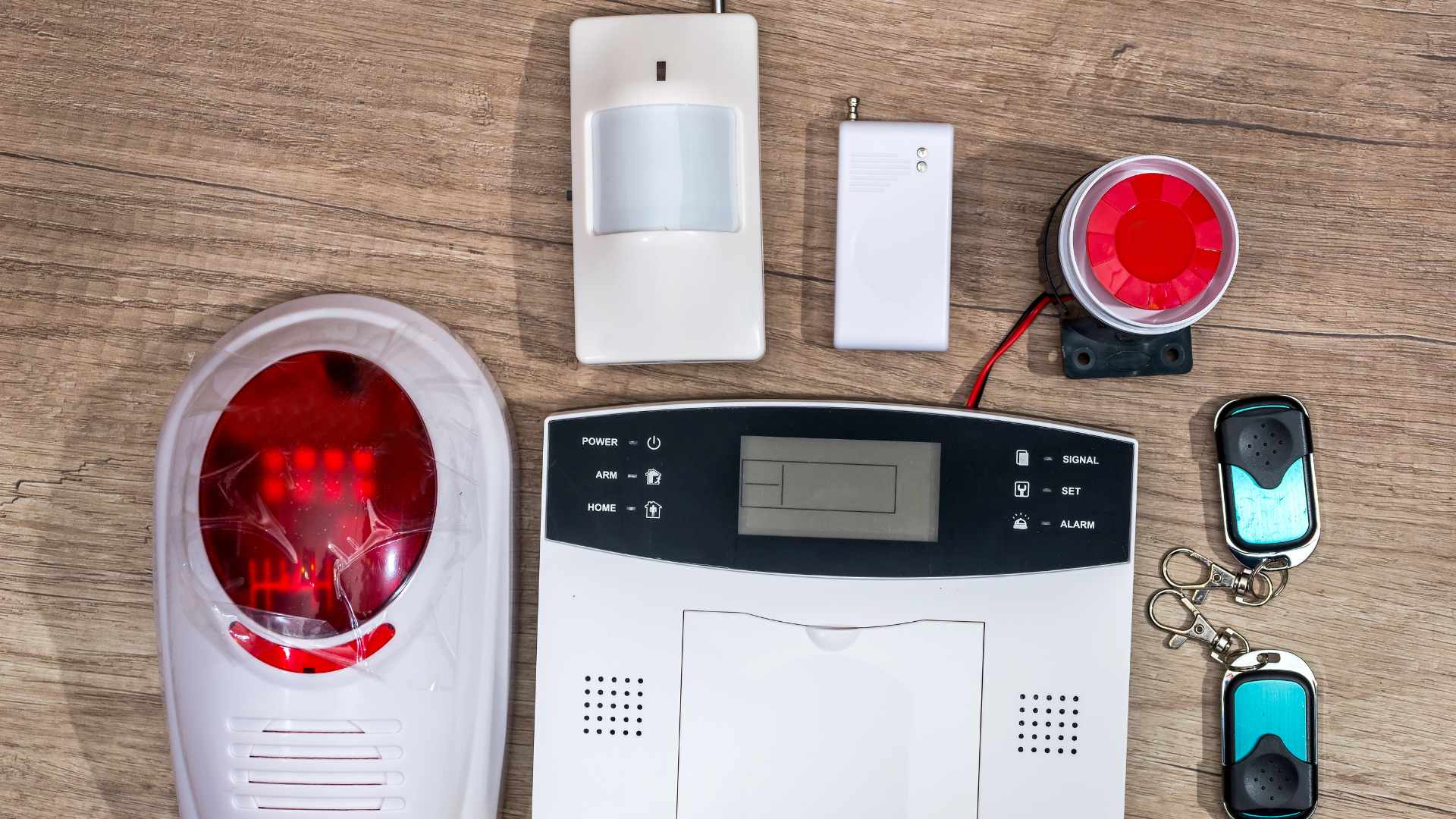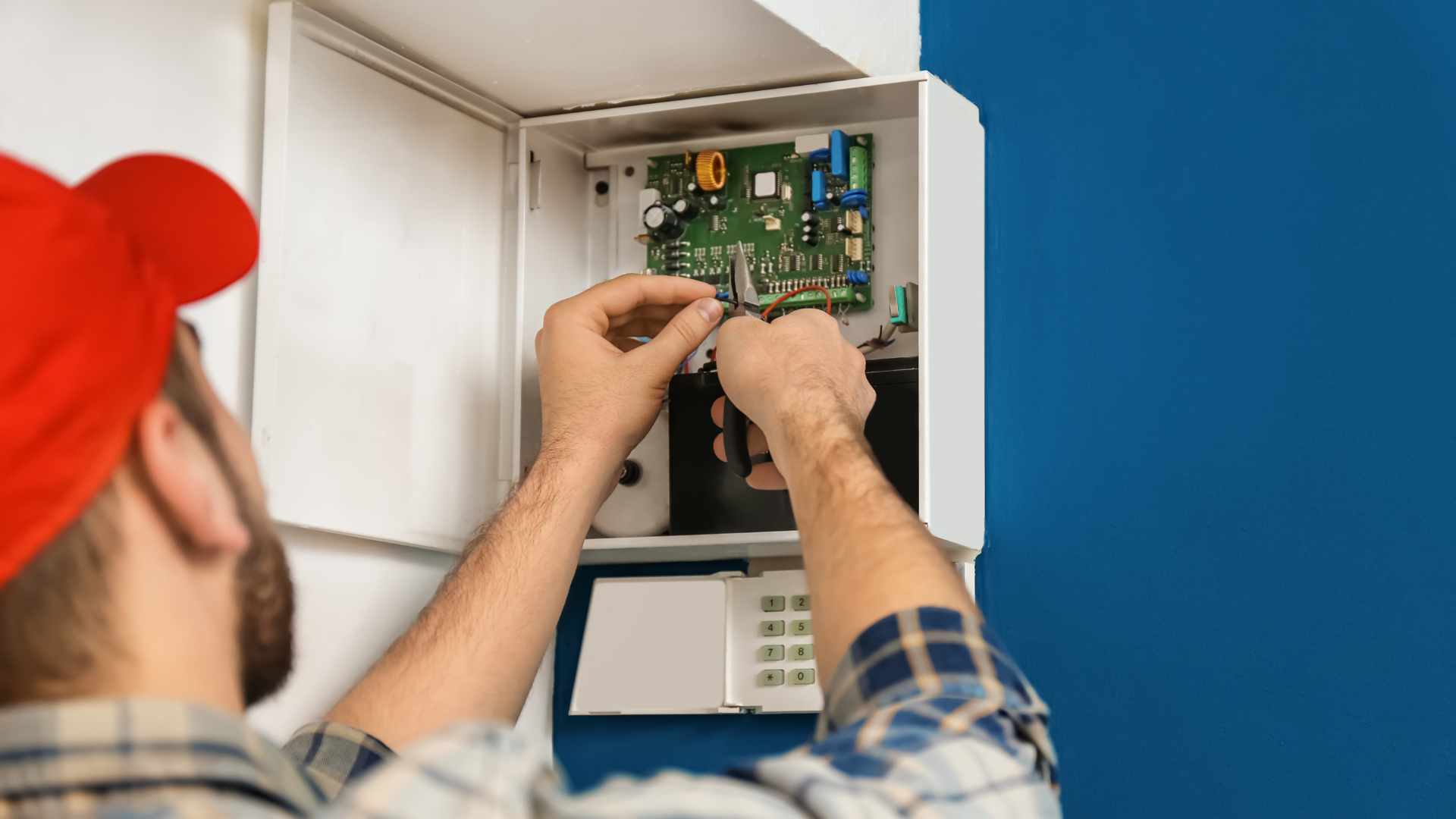Whether it is safeguarding our homes, businesses, or critical infrastructure, the importance of effective security measures cannot be overstated. Among these measures, perimeter security stands out as a first line of defence against intrusions and potential threats.
Perimeter alarms play a crucial role in this defence strategy, alerting us to any unauthorised access or suspicious activities along the boundaries of our properties. But with the vast sensor technologies available, the question arises: what is the best type of sensor for perimeter alarms?
The choice of sensor technology is vital because it determines the effectiveness and reliability of the perimeter alarm system. The right sensor can provide timely alerts, reduce false alarms, and operate efficiently under various environmental conditions. Conversely, an unsuitable sensor can lead to frequent false alarms, missed detections, and overall inefficiency, compromising the security of the premises.
This comprehensive guide will delve into the various types of perimeter alarm sensors, examining how they work, their pros and cons, and their best use cases. We will also explore technological advancements in sensor technology, common pitfalls to avoid when choosing and installing sensors, and the benefits of integrating different sensor types for a multi-layered security approach.
Types Of Perimeter Alarm Sensors
Perimeter alarm sensors play a crucial role in securing a property. There are various types, each with unique working mechanisms, advantages, and ideal applications. Here, we explore the different types of perimeter alarm sensors, how they function, their pros and cons, and the best use cases for each.
Infrared Sensors
Active Infrared Sensors
How They Work: Active infrared sensors consist of a transmitter and a receiver. The transmitter emits an infrared beam towards the receiver. If the beam is interrupted by an intruder, the sensor triggers an alarm.
Pros And Cons:
- Pros: Reliable in various environmental conditions and accurate detection.
- Cons: Can be affected by heavy fog, rain, or direct sunlight.
Best Use Cases: It is ideal for outdoor perimeters where precise detection is necessary, such as around fences or property boundaries.
Passive Infrared Sensors
How They Work: Passive infrared (PIR) sensors detect changes in infrared radiation, typically emitted by warm objects like humans and animals. They do not emit radiation but sense the infrared radiation in their field of view.
Pros And Cons:
- Pros: Energy-efficient, cost-effective, and easy to install.
- Cons: Limited range and can be triggered by small animals or rapid temperature changes.
Best Use Cases: It suits indoor or small outdoor areas with controlled environments like backyards or courtyards.
Microwave Sensors
How They Work: Microwave sensors emit microwave pulses and detect reflections from moving objects. They can penetrate and cover a wider area through walls, making them highly effective in various settings.
Pros And Cons:
- Pros: Large coverage areas can be detected through walls and objects.
- Cons: Susceptible to interference from electronic devices and can be more expensive.
Best Use Cases: Ideal for large open areas, industrial sites, and locations where movement needs to be detected through barriers.
Ultrasonic Sensors
How They Work: Ultrasonic sensors emit high-frequency sound waves, which are then timed to determine how long it takes for the waves to return after hitting an object. Moving into the detecting zone modifies the return time, triggering an alarm.
Pros And Cons:
- Pros: Effective in enclosed spaces, can detect through certain materials.
- Cons: Prone to false alarms from environmental noises, limited range.
Best Use Cases: Best suited for indoor environments, such as warehouses or garages, where precise movement detection is required.
Magnetic Sensors
How They Work: Magnetic sensors typically consist of a magnet and a sensor placed in proximity. The sensor triggers the warning when the magnetic field is disrupted (e.g. when a door or window is opened).
Pros And Cons:
- Pros: Simple installation, low cost, and reliable for entry points.
- Cons: Limited to detecting the opening of doors or windows, not movement.
Best Use Cases: Perfect for securing entry points like doors and windows in residential and commercial properties.
Fiber Optic Sensors
How They Work: Fiber optic sensors detect changes in light transmission through a fibre optic cable. Any bending or disturbance in the cable caused by an intruder triggers the alarm.
Pros And Cons:
- Pros: Immune to electromagnetic interference, can cover long distances.
- Cons: High installation cost, requires specialised equipment.
Best Use Cases are ideal for securing large perimeters, such as fences in industrial facilities or long boundary lines.
Vibration Sensors
How They Work: Vibration sensors detect vibrations caused by any physical disturbance. They are often attached to fences or walls to sense any tampering or climbing attempts.
Pros And Cons:
- Pros: Simple and effective for detecting physical disturbances.
- Cons: Can be triggered by environmental vibrations like heavy traffic or strong winds.
Best Use Cases: It is best used on fences, walls, or structures prone to physical tampering in residential and commercial settings.
Comparison Of Sensor Types
- Sensitivity: Active infrared and microwave sensors offer high sensitivity, while passive infrared and magnetic sensors provide moderate sensitivity. Vibration and ultrasonic sensors vary based on environmental conditions.
- Range: Microwave sensors typically offer the greatest range, followed by active infrared and ultrasonic sensors. Magnetic and vibration sensors have a limited range and are suitable for specific points.
- Environmental Factors: Fiber optic and active infrared sensors perform well in various environmental conditions, while ultrasonic and vibration sensors can be affected by environmental noise and movements.
- Cost: Magnetic and passive infrared sensors are generally the most cost-effective. While more expensive, microwave and fibre optic sensors offer advanced capabilities and larger coverage areas.
Selecting the right perimeter alarm sensor depends on the property’s security needs, environmental conditions, and budget constraints. Each type of sensor brings unique benefits, making it suitable for different applications that enhance perimeter security.
Integration Of Security Systems
For optimal perimeter security, it is essential to integrate various systems to ensure comprehensive coverage and effective response. Here’s how different components can be combined:
Integrated Systems
- Combining Sensors with CCTV: Motion sensors and ground radar systems can trigger CCTV cameras to focus on specific areas, providing real-time visual confirmation of an intrusion.
- Alarm Systems: Integrating alarms with motion sensors, fibre optic detection systems, and other intrusion detection devices ensures immediate alerts and quick responses to breaches.
- Access Control and Surveillance: Combining biometric authentication or smart locks with video surveillance can verify identity and monitor access points simultaneously, ensuring that only authorised personnel enter secure areas.
- Remote Monitoring and Control: Centralised control rooms or remote monitoring services can oversee the perimeter security system, enabling rapid intervention and coordination with security personnel.
Benefits Of Perimeter Alarm Systems
Implementing a robust perimeter alarm system offers several advantages, including:
Enhanced Security
- Early Detection: By identifying potential threats before they breach the perimeter, security personnel can respond swiftly to prevent unauthorised access.
- Deterrence: Visible security measures like CCTV cameras, lighting, and clear signage can deter intruders from attempting to breach the property.
- Layered Defence: Multiple layers of security, including physical barriers, motion sensors, and access control, create a more challenging environment for intruders.
Operational Efficiency
- Automation: Automated systems reduce the need for constant human surveillance, allowing security personnel to focus on critical tasks.
- Customizability: Security systems can be tailored to meet the specific needs of different properties, ensuring that each area is adequately protected.
Cost-Effectiveness
- Reduced Theft and Vandalism: Effective perimeter security minimises losses due to theft and damage, leading to lower insurance premiums and reduced repair costs.
- Efficient Resource Allocation: Advanced technology allows companies to allocate their security resources more efficiently, reducing the need for extensive physical security personnel.
Factors To Consider When Choosing A Sensor
When selecting a sensor for your security system, Many important considerations must be made to guarantee the chosen device meets your needs. Here are key considerations to guide your decision-making process:
Environment And Installation
Determine if the sensor will be used indoors or outdoors, as outdoor sensors must withstand harsh weather conditions. Consider where the sensor will be installed, including height and angle, to ensure optimal coverage and effectiveness. Assess factors such as temperature fluctuations, humidity, and exposure to dust or chemicals, which could impact sensor performance.
Technology And Features
Various sensors use different technologies, such as infrared, microwave, or ultrasonic waves. Choose based on your needs for accuracy and reliability. Evaluate the sensor’s detection range and sensitivity to minimize false alarms and ensure comprehensive coverage. Ensure compatibility with existing security systems and other devices for seamless operation.
Power Source
Wired sensors offer reliable power but require more complex installation, whereas wireless sensors are easier to install but depend on battery life. For wireless sensors, consider battery longevity and ease of replacement to avoid frequent maintenance.
Cost And Budget
Evaluate the upfront cost of the sensor, considering both the device itself and installation expenses. Factor in long-term maintenance and potential repair costs to ensure the sensor remains a cost-effective solution.
Compliance And Standards
Ensure the sensor complies with local regulations and industry standards for security devices. Look for certifications that attest to the sensor’s quality, reliability, and performance.
Reliability And Durability
Assess the sensor’s construction and materials to ensure it is resilient enough for the intended use. Research the manufacturer’s reputation for producing reliable and durable sensors.
Customer Support And Warranty
Consider the availability and quality of customer support, including installation assistance and technical troubleshooting. Check the warranty terms to protect your investment in case of defects or malfunctions.
Scalability
Choose easily integrated sensors into a scalable security system, allowing for future upgrades or expansions as your security needs evolve.
User Experience
Evaluate the sensor’s user interface. Its simplicity of use ensures it satisfies your usability requirements. Consider how the sensor communicates alerts and integrates with your existing notification systems.
Selecting the right sensor involves carefully evaluating various factors, including the type of sensor, environmental conditions, technology features, power source, cost, compliance, reliability, customer support, scalability, and user experience. Thorough consideration of these elements will ensure you choose a sensor that provides effective and reliable security.
Conclusion
Perimeter alarms are crucial to security measures, alerting us to potential threats and intrusions along property boundaries. The choice of sensor technology is vital as it determines the effectiveness and reliability of the perimeter alarm system. The right sensor can provide timely alerts, reduce false alarms, and operate efficiently under various environmental conditions.
Selecting the right perimeter alarm sensor depends on the property’s security needs, environmental conditions, and budget constraints. Each type brings unique benefits, making it suitable for different applications that enhance perimeter security. For optimal perimeter security, it is essential to integrate various systems to ensure comprehensive coverage and effective response.
Perimeter alarm systems offer benefits such as enhanced security, early detection, cost-effectiveness, and monitoring and responding to breaches. By integrating various sensors, such as CCTV, motion sensors, fibre optic detection systems, access control and surveillance, and remote monitoring and control, you can ensure your property remains well-protected against potential intrusions and threats.
FAQs About Perimeter Alarm System
What Are The Most Reliable Perimeter Sensors?
Reliability depends on the application, but infrared and microwave sensors are often considered highly reliable for most environments.
Can Perimeter Sensors Be Integrated With Home Automation Systems?
Many modern sensors can be integrated with home automation systems for enhanced control and monitoring.
How Do Weather Conditions Affect Perimeter Sensors?
Weather conditions can impact the performance of certain sensors, such as active infrared sensors, which may be affected by fog or heavy rain.
Are Wireless Perimeter Sensors As Effective As Wired Ones?
Wireless sensors offer flexibility and ease of installation but can be susceptible to interference. Wired sensors are generally more stable but require more effort to install.
What Is The Lifespan Of Typical Perimeter Sensors?
The lifespan varies by type and manufacturer but generally ranges from 5 to 10 years with proper maintenance.


